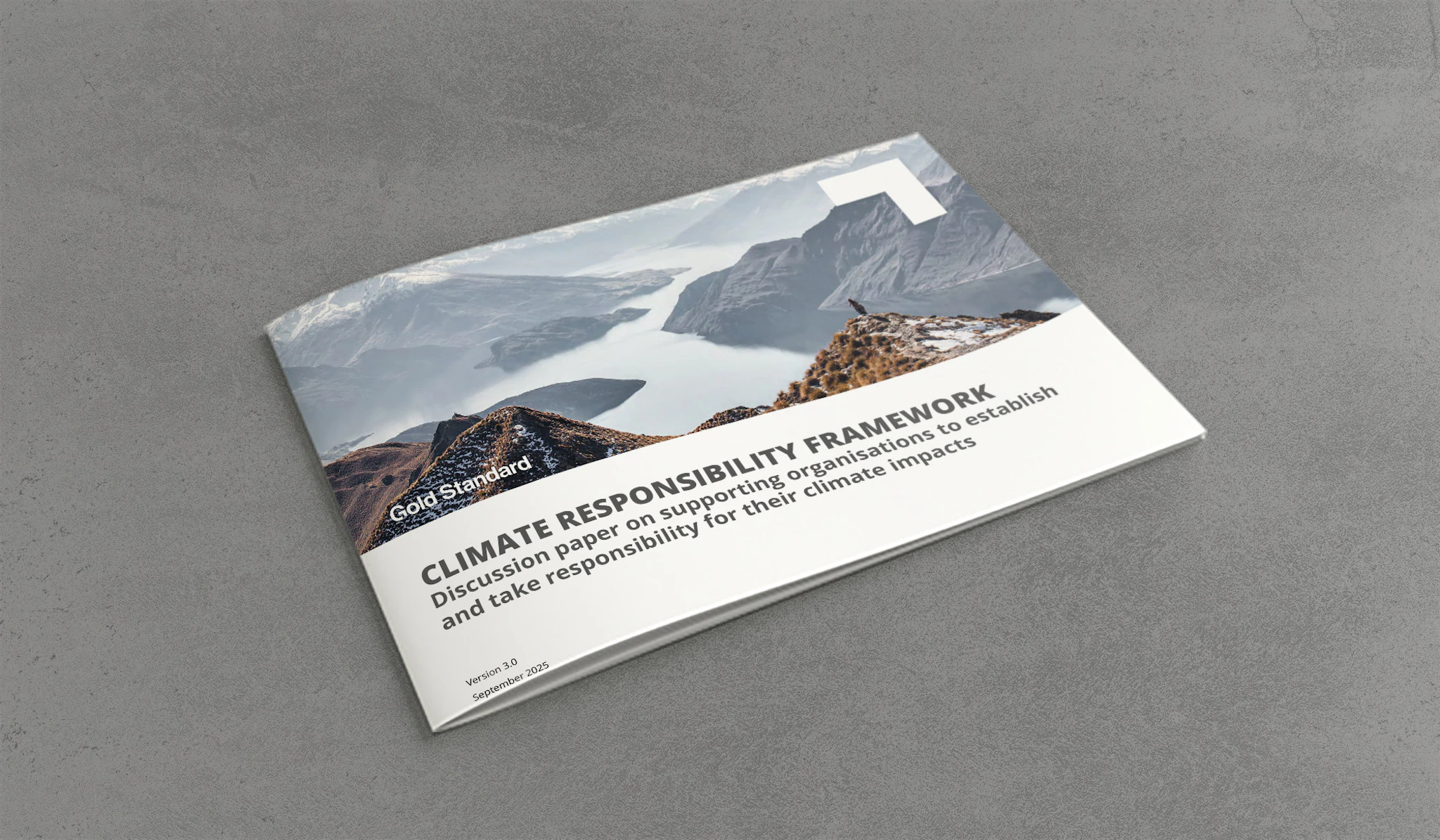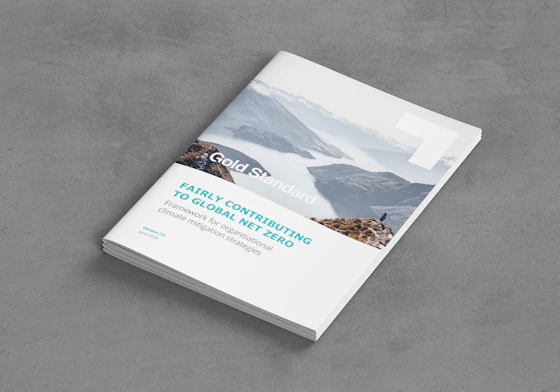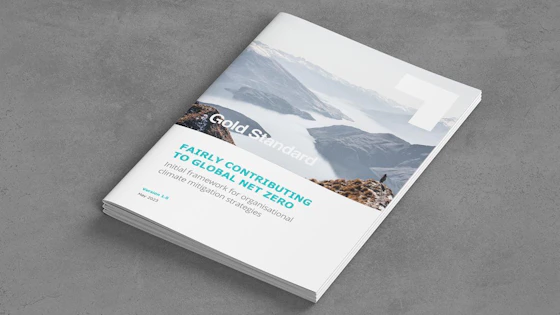Gold Standard released Version 3.0 of the Climate Responsibility Framework, providing organisations with clearer guidance, new insights, and stronger safeguards to help contribute fairly to global net zero.

This new edition offers companies, institutions, and stakeholders a structured, credible path to global net zero.
What’s new in V3.0?
- Expanded framing and purpose: A new preface outlines intended use, annual updates, and links to the Gold Standard Claims Guidelines, with new references to latest good practice
- Emerging science: Consideration of short-lived climate forcers (e.g. methane, aerosols) and their role in corporate strategies.
- Restructured principles: More granular treatment of ongoing, residual, and historical emissions.
- Practical tools: Clearer definitions of activity pools, supply sheds, and indirect mitigation, plus expanded governance and sector guidance.
- Credibility safeguards: Updated “do no harm” requirements, Indigenous Peoples and local community protections.
- New explanatory boxes: thematic inserts on short-lived climate forcers, value chain targets, Beyond Value Chain Mitigation (BVCM), CDR neutralisation pathways and claims.
- Climate Framework 4 phase approach: a new self-assessment approach (4 phases: Initiating, Emerging, Advancing, Leading) for organisations working towards global net zero, providing clear pathways for credible action.
By adopting the Framework, organisations gain clearer guardrails and credibility checks, ensuring their climate strategies are ambitious, transparent, and resilient to future shifts in science, standards, and stakeholder expectations.
V3.0 is both a roadmap and a credibility filter: helping companies design climate strategies that avoid common pitfalls and stand up to external scrutiny.


